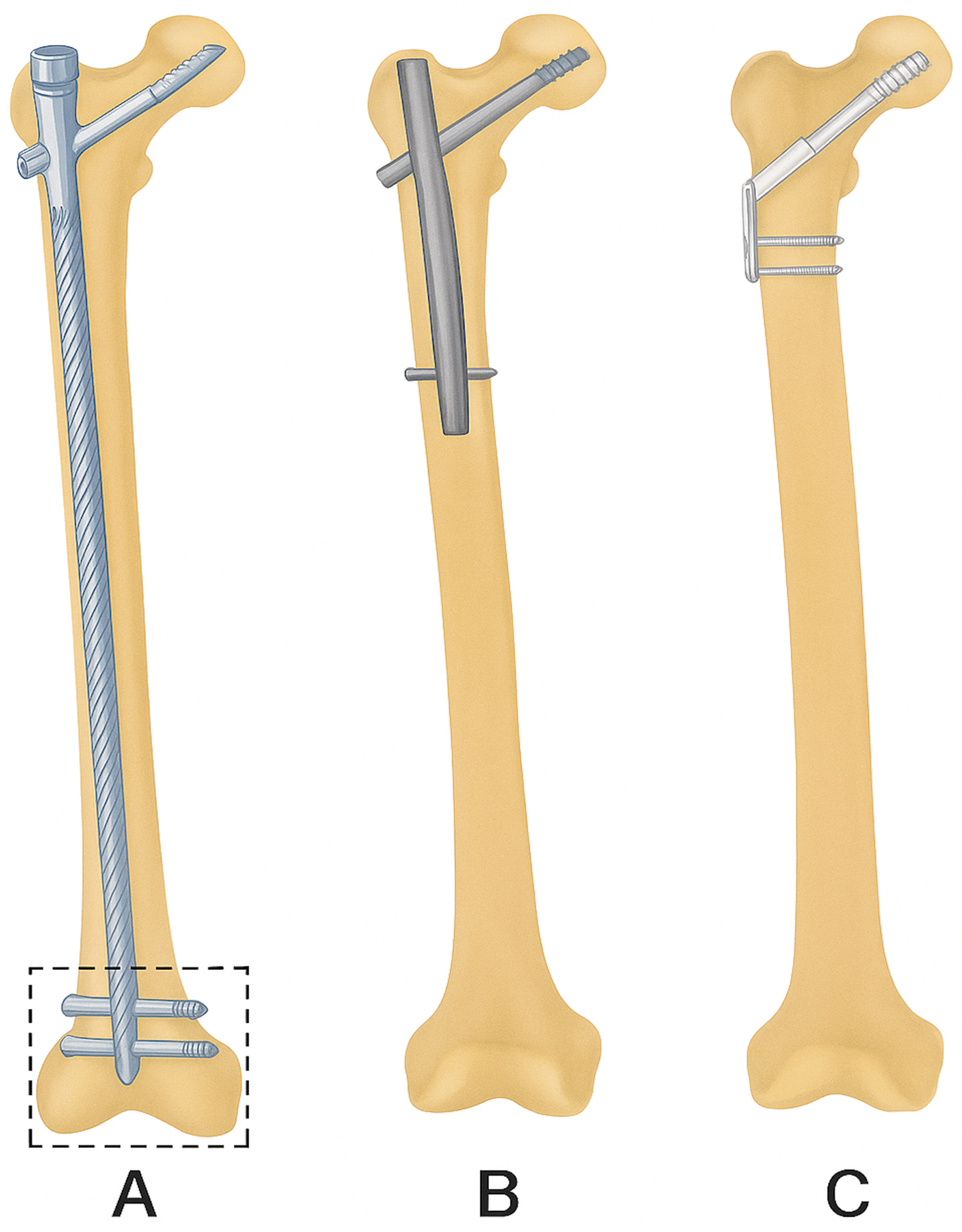JBJS Deputy Editor for Social Media, Dr. Matt Schmitz, contemplates a new study involving the fixation of femoral fragility fractures.
Geriatric hip fractures are an increasing burden on patients and the health-care system. Frequently, fragility fractures are associated with increased morbidity—including the occurrence of another fracture. The appropriate treatment for intertrochanteric and pertrochanteric femoral fractures with either a short implant (short cephalomedullary nail or dynamic hip screw-plate construct) or a long cephalomedullary nail to include fixation into the distal metaphysis has long been debated among surgeons caring for patients who sustain these fractures.
In the August 6, 2025 issue of The Journal, Murphy et al. report on their findings on this topic. The study is available at JBJS.org along with a downloadable visual abstract:
This multicenter study investigated the impact of fixation type on the risk of subsequent peri-implant fracture in patients with pertrochanteric and intertrochanteric femoral fragility fractures. The researchers conducted a retrospective chart review of 913 patients treated between January 2005 and January 2018, with cases categorized as spanning fixation (reaching the distal femoral metaphysis) or non-spanning fixation. The median patient age was 80 years, and median follow-up was 5 months.
The investigators found that the cumulative incidence of peri-implant fracture was significantly lower with spanning fixation (0%) compared with non-spanning fixation (3.3%) within the first year (p < 0.01). The hazard ratio for spanning fixation was 0.14, indicating a substantially reduced risk of peri-implant fracture. In addition, a subgroup analysis demonstrated that non-spanning plates (3.5%) and non-spanning nails (2.6%) were both associated with a greater cumulative incidence of peri-implant fracture compared with spanning fixation (0%). Contralateral femoral fractures occurred in 4.4% of patients, with no significant association with fixation type, suggesting that the increased risk of peri-implant fracture for non-spanning fixation was not due to selection bias. There are limitations to every project, and the authors note that this study was not powered to detect more subtle differences between the short nail and plate constructs with regard to peri-implant fracture incidence.
The findings in this report support the use of spanning fixation to mitigate the risk of subsequent peri-implant fracture, although the choice of fixation should consider individual patient circumstances and the surgical context. As is always the case with surgical discussions, the potential benefit needs to be weighed against any downsides, such as a potentially longer surgical time with use of a longer nail. However, these data seem to support the potential for “going long” (spanning the diaphysis of the femur) for fixation of low-energy pertrochanteric and intertrochanteric femoral fractures in our older patients. More research is needed before we can fully adopt the motto, “Go long or go home!”
Read the full study at JBJS.org: A Multicenter Study of Intertrochanteric and Pertrochanteric Fragility Fractures: Spanning Fixation Mitigates the Risk of Peri-Implant Fractures
JBJS Deputy Editor for Social Media




